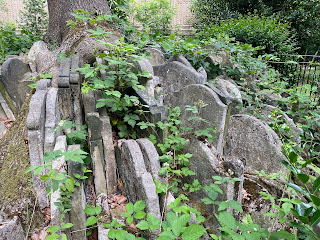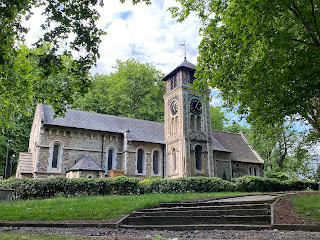The novelist and poet Thomas Hardy (1840-1928) is best known for his novels set in rural 'Wessex', however before turning to writing full time he studied architecture in London from 1862-67 under Mr Arthur Blomfield, an architect based in Covent Garden.
During the 1860s the Midland Railway line was being built over part of the original St. Pancras Churchyard. Blomfield was commissioned by the Bishop of London to supervise the proper exhumation of human remains and dismantling of tombs.
He passed this unenviable task onto his protégé Thomas Hardy in c.1865. Hardy would have spent many hours in Old St. Pancras Churchyard during the construction of the railway, overseeing the careful removal of bodies and tombs from the land on which the railway was being built. The headstones around this Ash tree (Fraxinus excelsior) would have been placed here around this time.
The tree has since grown in amongst the stones. A few years before Hardy's involvement here, Charles Dickens makes reference to Old St. Pancras Churchyard in his Tale of Two Cities (1859), as the churchyard in which Roger Cly was buried and where Jerry Cruncher was known to 'fish' (a 19th Century term for tomb robbery and body snatching).
Sad news update - I read on 28th December 2022 that the tree has now fallen.
“The quirky London landmark had been suffering with a fungal infection for many years and, according to Camden Council, had been further weakened by a heavy storm. In a statement in the summer, they recognised the cultural importance of the tree and were exploring ways to commemorate it.”










No comments:
Post a Comment